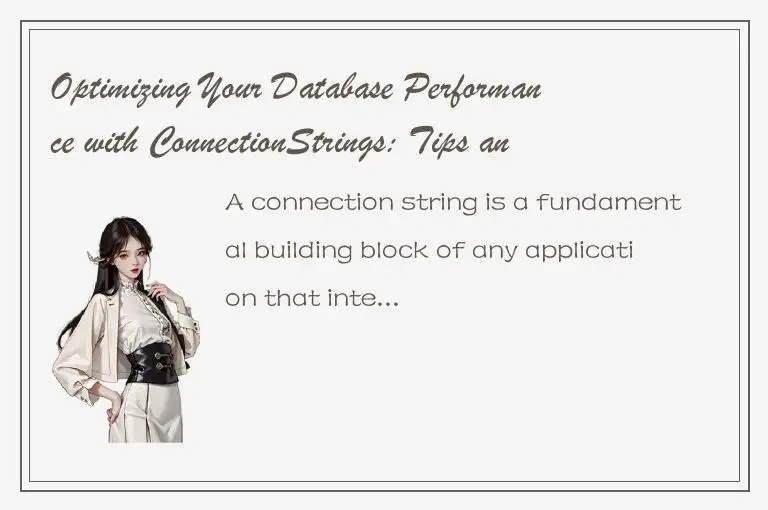A connection string is a fundamental building block of any application that interacts with a database. The connection string specifies the details of how to communicate with the database, including the host name or IP address where the database is located, the name of the database, and the credentials for accessing the database. With the right connection string, you can optimize your database performance, so it’s essential to understand how to create and modify them. In this article, we explore the tips and tricks for optimizing your database performance with connection strings.

Tip 1: Use Connection Pooling
Connection pooling is a technique for reusing existing database connections rather than creating a new connection each time an application needs to interact with the database. When an application requests a connection, the connection pool manager checks to see if there is an available connection in the pool. If there is, then the connection is returned to the application. Otherwise, the pool manager creates a new connection and adds it to the connection pool. Using connection pooling can significantly reduce the overhead associated with creating new connections and improving the application’s performance.
To enable connection pooling, add “Pooling=true” to the connection string. For example, a SQL Server connection string with connection pooling enabled might look like this:
“Server=myServerAddress;Database=myDataBase;User Id=myUsername;Password=myPassword;Pooling=true;”
Tip 2: Use Integrated Security
Integrated security is a method for authenticating users based on their Windows credentials. Instead of providing a username and password in the connection string, the application uses the current user’s Windows account to authenticate with the database. Using integrated security can improve security and simplify administration, as there is no need to manage database credentials.
To use integrated security, add “Integrated Security=true” to the connection string. For example, a SQL Server connection string with integrated security enabled might look like this:
“Server=myServerAddress;Database=myDataBase;Integrated Security=true;”
Tip 3: Set the Connection Timeout
The connection timeout determines how long the application waits for a connection to the database before timing out. If the connection is not established within the specified time, an error message is returned to the application. Setting the connection timeout too low can result in connection errors, while setting it too high can waste resources and slow down the application.
To set the connection timeout, add “Connection Timeout=XX” to the connection string, where XX is the number of seconds to wait before timing out. For example, a SQL Server connection string with a timeout of 30 seconds might look like this:
“Server=myServerAddress;Database=myDataBase;User Id=myUsername;Password=myPassword;Connection Timeout=30;”
Tip 4: Use SSL Encryption
Secure Sockets Layer (SSL) is a protocol for encrypting data sent over the internet. SSL encryption can help secure sensitive data transmitted between the application and the database, especially when the database is hosted in the cloud or accessed over public networks. Most database systems support SSL encryption for database connections.
To use SSL encryption, add “Encrypt=true” to the connection string. For example, a SQL Server connection string with SSL encryption enabled might look like this:
“Server=myServerAddress;Database=myDataBase;User Id=myUsername;Password=myPassword;Encrypt=true;”
Tip 5: Reduce the Connection String Length
Connection strings can become long and complicated, especially when using advanced features like connection pooling, integrated security, and SSL encryption. A long connection string can be challenging to manage, especially when deploying the application to different environments. To improve manageability, reduce the length of the connection string where possible.
One way to reduce the connection string length is to use a configuration file to store the connection string rather than hard-coding it into the application. This approach simplifies management and can improve security by separating sensitive information from the application code. Another way to reduce the connection string length is to use connection string builders, which allow you to specify connection details incrementally.
Conclusion
Optimizing your database performance with connection strings requires understanding the different options available and how to use them effectively. By following the tips and tricks outlined in this article, you can improve your application’s performance, security, and manageability. Connection pooling, integrated security, connection timeouts, SSL encryption, and reducing the connection string length are all essential considerations when developing applications that interact with a database. With the right connection string, you can optimize your application’s performance and provide a better user experience.




 QQ客服专员
QQ客服专员 电话客服专员
电话客服专员